The automotive landscape is rapidly evolving with the advent of electric vehicles (EVs), and two significant contenders in the SUV segment are the Ford Explorer EV and the Volvo EX40. Both models for 2024 promise innovative technology, impressive performance, and sustainability. This article will dive into a detailed comparison of these electrifying SUVs, focusing on their technical specifications and innovations.
Ford Explorer EV vs Volvo EX40 – Which model is better for everyday use?
Both models have their strengths – but which one suits you more?
Compare performance, efficiency, price and space directly: Ford Explorer EV or Volvo EX40?
Pricing and Value
Price plays a crucial role in consumers' decisions, and the Ford Explorer EV is positioned slightly more affordably compared to the Volvo EX40. With a price range starting from €42,500 for the Explorer EV and extending to €57,200, it offers various configurations that meet different needs and budgets. In contrast, the Volvo EX40 starts at €49,990 and can go up to €59,590, placing it at a higher price point for consumers.
Powertrain and Performance
When it comes to performance, the Ford Explorer EV offers several configurations, including rear-wheel and all-wheel drive options, with power outputs ranging from 170 HP to 340 HP. Acceleration from 0 to 100 km/h can be achieved in as little as 5.3 seconds in the high-performance variant, making it an exciting choice for those who prioritize speed. On the other hand, the Volvo EX40 excels in performance with its top-tier variant reaching up to 408 HP and accelerates from 0 to 100 km/h in just 4.8 seconds, showcasing its sporty prowess.
Battery Technology and Electric Range
Both vehicles boast robust battery technology, contributing to their electric ranges. The Ford Explorer EV offers a battery capacity of up to 79 kWh, achieving an impressive range of 602 km in the most efficient variant. The Volvo EX40, with a maximum battery capacity of 79 kWh, achieves a commendable range of up to 576 km. This competitive electric range makes both vehicles viable options for longer-distance travels.
Efficiency and Consumption
Efficiency is essential for maximizing the driving range. The Ford Explorer EV stands out with its consumption figures, averaging between 13.9 kWh to 16.6 kWh per 100 km, maintaining its position as a leader in energy efficiency. The Volvo EX40, while still efficient, has a higher consumption rate ranging from 16.6 kWh to 17.5 kWh per 100 km, indicating a slightly less economical approach to energy usage.
Interior Space and Comfort
Both SUVs are designed with five seats and offer ample interior space for passengers and cargo. The Ford Explorer EV features a trunk capacity of 450 L, while the Volvo EX40 comes with a slightly smaller capacity of 410 L. Despite this difference, both models provide a comfortable riding experience suitable for families and long trips.
Dimensions and Weight
Dimensionally, the Ford Explorer EV measures 4468 mm in length, 1871 mm in width, and 1630-1639 mm in height, providing a spacious feeling inside. The Volvo EX40 is slightly smaller at 4440 mm long, 1863 mm wide, and 1647 mm tall but maintains a robust presence on the road. In terms of curb weight, the Explorer EV weighs between 2090 kg and 2167 kg, while the EX40's curb weight ranges from 2040 kg to 2170 kg, indicating a well-balanced build in both models.
Innovative Features
In terms of innovation, both brands have integrated advanced technology into their EV offerings. The Ford Explorer EV is equipped with state-of-the-art infotainment and telematics systems, including over-the-air updates and driver-assistance features that enhance safety and connectivity. The Volvo EX40 emphasizes sustainability with interior materials sourced from recycled products and an advanced driver interface that promotes a seamless user experience.
Conclusion: Which SUV Reigns Supreme?
Ultimately, choosing between the Ford Explorer EV and the Volvo EX40 will heavily depend on personal preferences, lifestyle, and budget. The Ford Explorer EV presents a compelling combination of affordability, range, and efficiency. Meanwhile, the Volvo EX40 excels in performance and sustainability. Car enthusiasts eagerly anticipate the real-world performance of these models, marking a significant step in the electrification of the SUV market.
Here’s where it gets real: The technical differences in detail
Costs and Efficiency:
When it comes to price and running costs, the biggest differences usually appear. This is often where you see which car fits your budget better in the long run.
Ford Explorer EV has a evident advantage in terms of price – it starts at 34200 £, while the Volvo EX40 costs 42800 £. That’s a price difference of around 8648 £.
In terms of energy consumption, the advantage goes to the Ford Explorer EV: with 14.50 kWh per 100 km, it’s slightly more efficient than the Volvo EX40 with 16.60 kWh. That’s a difference of about 2.10 kWh.
As for range, the Ford Explorer EV performs slight better – achieving up to 602 km, about 26 km more than the Volvo EX40.
Engine and Performance:
Power, torque and acceleration say a lot about how a car feels on the road. This is where you see which model delivers more driving dynamics.
When it comes to engine power, the Volvo EX40 has a evident edge – offering 442 HP compared to 340 HP. That’s roughly 102 HP more horsepower.
In acceleration from 0 to 100 km/h, the Volvo EX40 is to a small extent quicker – completing the sprint in 4.60 s, while the Ford Explorer EV takes 5.30 s. That’s about 0.70 s faster.
There’s no difference in top speed – both reach 180 km/h.
There’s also a difference in torque: Ford Explorer EV pulls hardly perceptible stronger with 679 Nm compared to 670 Nm. That’s about 9 Nm difference.
Space and Everyday Use:
Whether family car or daily driver – which one offers more room, flexibility and comfort?
Both vehicles offer seating for 5 people.
In curb weight, Ford Explorer EV is hardly perceptible lighter – 1908 kg compared to 2040 kg. The difference is around 132 kg.
In terms of boot space, the Ford Explorer EV offers slight more room – 450 L compared to 410 L. That’s a difference of about 40 L.
In maximum load capacity, the Ford Explorer EV performs hardly perceptible better – up to 1422 L, which is about 22 L more than the Volvo EX40.
When it comes to payload, Ford Explorer EV somewhat takes the win – 585 kg compared to 480 kg. That’s a difference of about 105 kg.
Who comes out on top?
Overall, the Ford Explorer EV shows itself to be only a minor advantage and secures the title of DriveDuel Champion.
It convinces with the more balanced overall package and proves to be the more versatile choice for everyday use.
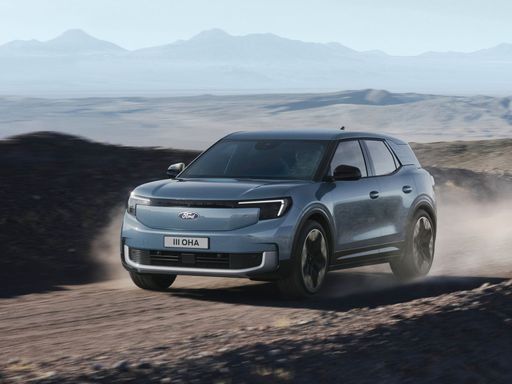 @ Ford Motor Company / Ford Media Center
@ Ford Motor Company / Ford Media Center
Ford Explorer EV
Ford Explorer EV
The Ford Explorer EV marks a significant step forward in the brand's journey towards electrification, offering an impressive blend of performance and sustainability. This modern SUV features a sleek design complemented by advanced technology that enhances the driving experience. With a focus on comfort and innovation, the Explorer EV aims to redefine family travel for the electric age.
details @ Ford Motor Company / Ford Media Center
@ Ford Motor Company / Ford Media Center
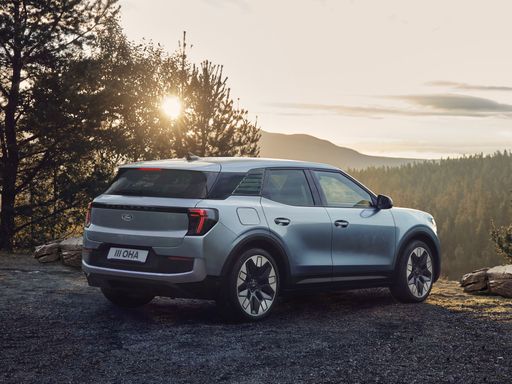 @ Ford Motor Company / Ford Media Center
@ Ford Motor Company / Ford Media Center
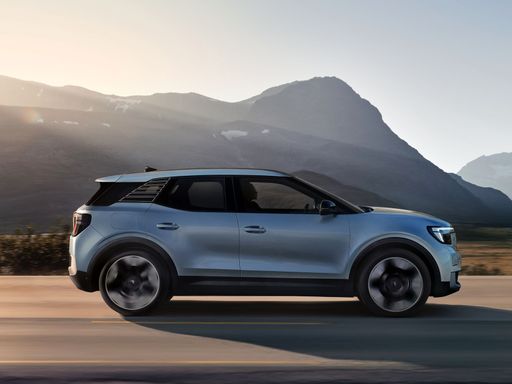 @ Ford Motor Company / Ford Media Center
@ Ford Motor Company / Ford Media Center
Volvo EX40
The Volvo EX40 represents a new chapter in the brand's commitment to sustainability and innovation, combining elegant Scandinavian design with cutting-edge electric vehicle technology. With its spacious interior and intuitive technology, the EX40 provides a comfortable and connected driving experience. The focus on eco-friendly materials and efficient performance makes it an attractive choice for those seeking a responsible and stylish drive.
details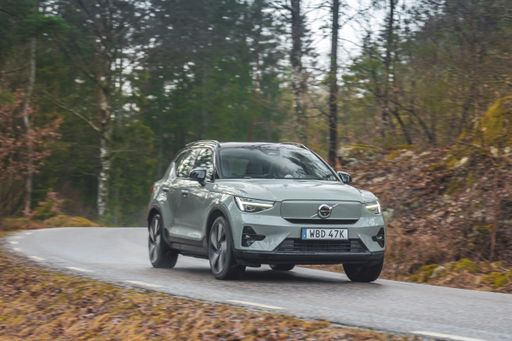 @ Volvo Cars
@ Volvo Cars
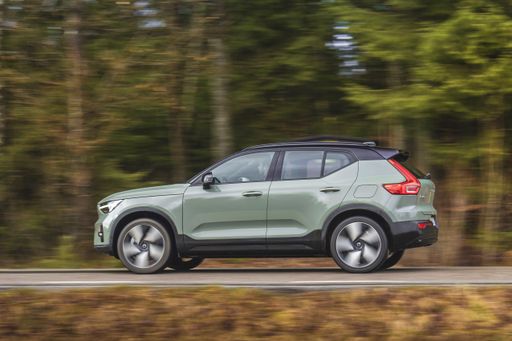 @ Volvo Cars
@ Volvo Cars
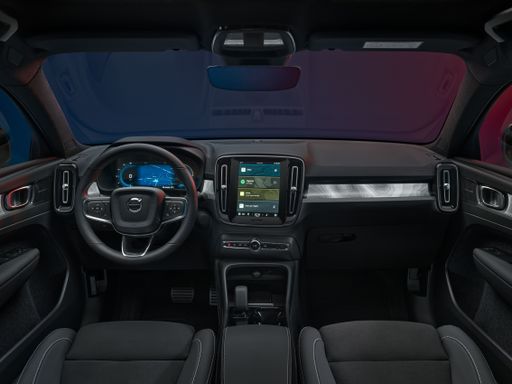 @ Volvo Cars
@ Volvo Cars
 @ Ford Motor Company / Ford Media Center
@ Ford Motor Company / Ford Media Center
|
 @ Volvo Cars
@ Volvo Cars
|
|
|
|
Costs and Consumption |
|
|---|---|
|
Price
34200 - 48800 £
|
Price
42800 - 58200 £
|
|
Consumption L/100km
-
|
Consumption L/100km
-
|
|
Consumption kWh/100km
14.5 - 17.2 kWh
|
Consumption kWh/100km
16.6 - 17.6 kWh
|
|
Electric Range
360 - 602 km
|
Electric Range
480 - 576 km
|
|
Battery Capacity
52 - 79 kWh
|
Battery Capacity
67 - 79 kWh
|
|
co2
0 g/km
|
co2
0 g/km
|
|
Fuel tank capacity
-
|
Fuel tank capacity
-
|
Dimensions and Body |
|
|---|---|
|
Body Type
SUV
|
Body Type
SUV
|
|
Seats
5
|
Seats
5
|
|
Doors
5
|
Doors
5
|
|
Curb weight
1908 - 2179 kg
|
Curb weight
2040 - 2170 kg
|
|
Trunk capacity
445 - 450 L
|
Trunk capacity
410 L
|
|
Length
4468 mm
|
Length
4440 mm
|
|
Width
1871 mm
|
Width
1863 mm
|
|
Height
1630 - 1639 mm
|
Height
1647 mm
|
|
Max trunk capacity
1417 - 1422 L
|
Max trunk capacity
1286 - 1400 L
|
|
Payload
561 - 585 kg
|
Payload
430 - 480 kg
|
Engine and Performance |
|
|---|---|
|
Engine Type
Electric
|
Engine Type
Electric
|
|
Transmission
Automatic
|
Transmission
Automatic
|
|
Transmission Detail
Reduction Gearbox
|
Transmission Detail
Reduction Gearbox
|
|
Drive Type
Rear-Wheel Drive, All-Wheel Drive
|
Drive Type
Rear-Wheel Drive, All-Wheel Drive
|
|
Power HP
170 - 340 HP
|
Power HP
238 - 442 HP
|
|
Acceleration 0-100km/h
5.3 - 8.7 s
|
Acceleration 0-100km/h
4.6 - 7.3 s
|
|
Max Speed
160 - 180 km/h
|
Max Speed
180 km/h
|
|
Torque
310 - 679 Nm
|
Torque
420 - 670 Nm
|
|
Number of Cylinders
-
|
Number of Cylinders
-
|
|
Power kW
125 - 250 kW
|
Power kW
175 - 325 kW
|
|
Engine capacity
-
|
Engine capacity
-
|
General |
|
|---|---|
|
Model Year
2024 - 2025
|
Model Year
2024
|
|
CO2 Efficiency Class
A
|
CO2 Efficiency Class
A
|
|
Brand
Ford
|
Brand
Volvo
|
What drive types are available for the Ford Explorer EV?
The Ford Explorer EV is available as Rear-Wheel Drive or All-Wheel Drive.
The prices and data displayed are estimates based on German list prices and may vary by country. This information is not legally binding.
